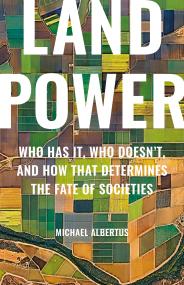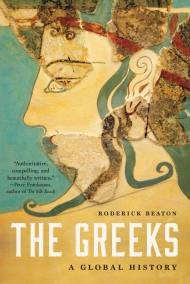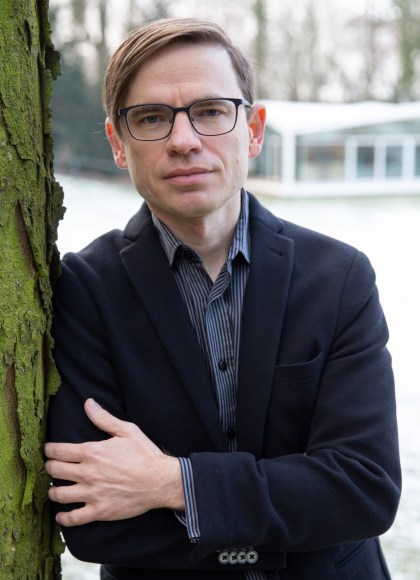Promotion
Use code BEST25 for 25% off storewide. Make sure to order by 11:59am, 12/12 for holiday delivery!
By clicking “Accept,” you agree to the use of cookies and similar technologies on your device as set forth in our Cookie Policy and our Privacy Policy. Please note that certain cookies are essential for this website to function properly and do not require user consent to be deployed.
Elderflora
A Modern History of Ancient Trees
Contributors
By Jared Farmer
Formats and Prices
- On Sale
- Oct 18, 2022
- Page Count
- 448 pages
- Publisher
- Basic Books
- ISBN-13
- 9780465097852
Price
$19.99Price
$25.99 CADFormat
Format:
- ebook $19.99 $25.99 CAD
- Hardcover $35.00 $44.00 CAD
- Trade Paperback $21.99 $29.99 CAD
This item is a preorder. Your payment method will be charged immediately, and the product is expected to ship on or around October 18, 2022. This date is subject to change due to shipping delays beyond our control.
Buy from Other Retailers:
“Rich…fascinating.”—The Wall Street Journal
Humans have always revered long-lived trees. But as historian Jared Farmer reveals in Elderflora, our veneration took a modern turn in the eighteenth century, when naturalists embarked on a quest to locate and precisely date the oldest living things on earth. The new science of tree time prompted travelers to visit ancient specimens and conservationists to protect sacred groves. Exploitation accompanied sanctification, as old-growth forests succumbed to imperial expansion and the industrial revolution.
Taking us from Lebanon to New Zealand to California, Farmer surveys the complex history of the world’s oldest trees, including voices of Indigenous peoples, religious figures, and contemporary scientists who study elderflora in crisis. In a changing climate, a long future is still possible, Farmer shows, but only if we give care to young things that might grow old.
Winner of the 2023 Jacques Barzun Prize in Cultural History
Genre:
-
“Rich...fascinating.”Wall Street Journal
-
“A sweeping, exceptional tribute to the oldest living organisms on Earth.”Forbes
-
“An expansive global history of grand and venerable trees…Old trees have much to teach us: we would be wise to listen.”Nature
-
“Magisterial.”Natural History
-
“The book succeeds as a cultural history of the conservation ideal that led society to forest preservation.”Science
-
"A masterful blend of natural and human history—with an emphasis on the human. Farmer's elderflora aren't just amazing old organisms, but a backdrop against which human drama, hubris and decency play out."New Scientist
-
"Farmer deserves credit for weaving such complex and disparate materials into his narrative whole."Spectator
-
"From the cedars of Lebanon to the olive trees of the Mediterranean, and from the Paleozoic era to the present day, Farmer presents a meticulously researched and highly engaging account."Observer
-
“Farmer masterfully blends science, religion, and history, making for a beautiful and moving portrait of nature over time.”Publishers Weekly, starred review
-
"An ingenious examination of old trees mixing history, politics, and science…Nature lovers will relish the author’s stories."Kirkus, starred review
-
"Farmer shares an unusual breadth and depth of botanical and human history, offering long, sometimes twisty profiles of significant scientists, among them Edmund Schulman, who pioneered the field of dendrochronology, the study of growth rings."Booklist, starred review
-
“A trove of remarkable information…Trees offer us much wisdom through the medium of Farmer’s narrative.”Berlin Journal
-
“A worthwhile read.”Daily Kos
-
“Because of the unique approaches it takes to the topic and to history telling, this book has something to offer a bevy of different readers.”H-Net
-
“Jared Farmer brings both classic and state-of-the-art botany alive. Farmer shows a wonderfully deep understanding of the scientific process. He deftly communicates the research produced by generations of scientists. Moreover, he shows singular insight into how we do what we do—and perhaps more importantly—why we spend our lives studying trees.”Hope Jahren, bestselling author of Lab Girl
-
"In Elderflora, Jared Farmer has created something that has never existed before. It appears to be a series of interwoven journeys – biological, cultural, scientific – spanning Earth and revealing 5,000 years of living trees and our amazement in their presence. But the author’s mastery is unprecedented. Beautifully told, full of pathos, this book is itself a force of nature."Dan Flores, New York Times-bestselling author of Coyote America
-
"Jared Farmer has written a history that is as big and bold as the ancient trees at its center. These trees have stood for ages and endured the unremitting assault of modern society. In them, Farmer finds not only a rich organic archive but also the wisdom of elders—wisdom that surely deserves our heed."Jack E. Davis, author of The Gulf
-
"Jared Farmer has given us a stunning, globe-spanning, deep-time history, one that is also moving and intimate: a story of ancient trees in all their beauty and complexity that is also a story of how we imagine the best and worst of ourselves. From the hills of Lebanon to the trails of Sequoia National Park to Polish old growth, Elderflora transports us, and asks us to seek a better world for trees—and ourselves."Bathsheba Demuth, author of Floating Coast
-
"Through the engrossing stories of long-lived tree species and long-lived trees, historian Jared Farmer immerses us in 'tree time,' vividly evoking a deeper past and a vital, enduring future."Michelle Nijhuis, author of Beloved Beasts
-
“Jared Farmer writes of ancient trees with a wisdom and eloquence worthy of the sacred values they have long embodied for so many people around the world. Elderflora is both a delight and a revelation.”William Cronon, author of Nature’s Metropolis
-
“While it is true that the trees have no tongues, that doesn’t mean they don’t speak to us. Having once cored old growth trees on the grounds of Thomas Jefferson’s Monticello to decipher riddles of our past, I know something about the remarkable stories that elderflora tell us about our environment and our history. Read Jared Farmer’s lucid and fascinating book to discover the other mysteries told by elderflora.”Michael Mann, author of The New Climate War
Newsletter Signup
By clicking ‘Sign Up,’ I acknowledge that I have read and agree to Hachette Book Group’s Privacy Policy and Terms of Use







